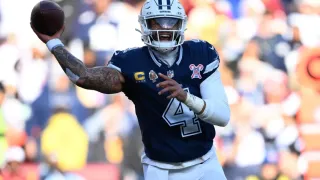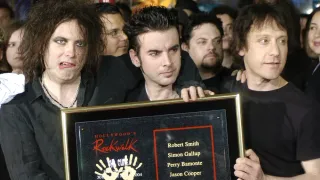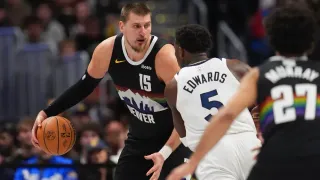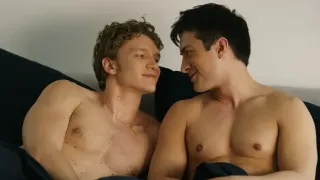July 11, 2022
Queering Cinema: 'Desert Fury'
Robert Nesti READ TIME: 4 MIN.
In the 1940s, two trends emerged in Hollywood that didn't necessarily mix: Technicolor and Film Noir. How can a cinematographer achieve those iconic dark shadows and expressionistic effects so characteristic of the crime genre when working in a technology that is so brightly lit and color-saturated?
But as "Noir in Color," a curated collection on the Criterion Channel shows, from the late 1940s through the 1950s directors and their cinematographers embraced the technology in numerous crime dramas with much success. Perhaps the most notable (and the first) is "Leave Her to Heaven," John M. Stahl's 1945 noir that follows the perverse machinations of a clearly unbalanced woman (played to perfection by Gene Tierney) who becomes so obsessed with her husband (Cornell Wilde) that she murders his disabled brother and, in a unexpected move, kills herself to frame Wilde and her sister (Jeanne Crain).
Far lesser known is "Desert Fury," directed by Lewis Allen, which was released in 1947. And what a find this is, especially in what may be the most overt noir with queer content, even more than "Strangers on a Train" and "Laura." How this film passed the stringent production code is something of a miracle.
Set in the desert town of Chuckawalla, Nevada, "Desert Fury" centers on gangster Eddie Bendix (John Hodiak) who returns to the town where his wife died under mysterious circumstances some years before. Accompanying him is his longtime companion Johnny Ryan (Wendell Corey), whose relationship is revealed as far more complicated than just being partners in crime. The pair immediately meet 19-year-old Paula Haller (played by 25-year-old Lizabeth Scott), who hits it off with Eddie, much to Johnny's chagrin.
In other films of the era, that tension largely plays beneath the surface or centers on a heterosexual triangle. But in "Desert Fury," that triangle is clearly queer and uncomfortably at the surface as Johnny gets more and more agitated when Eddie and Paula become an item. Take, for instance, when Eddie confesses to Paula how he met Johnny with surprising candor. "It was in the automat off Times Square at two in the morning. I was broke. He had a couple of dollars. We got to talking. He ended up paying for my ham and eggs. I went home with him that night. We were together from then on."
Such a confession brings the queer subtext to the surface, which is exacerbated by Johnny's jealous behavior that continues to grow right to the end. In 1988, Eddie Mueller (the host of TCM's Film Noir series "Noir Alley") wrote in his book "Dark City, The Lost World of Film Noir": "'Desert Fury' is the gayest movie ever produced in Hollywood's golden era. The film is saturated – with incredibly lush color, fast and furious dialogue dripping with innuendo, double entendres, dark secrets, outraged face-slappings, overwrought Miklos Rosza violins. How has this film escaped revival or cult status? It's Hollywood at its most gloriously berserk."
And film historian Foster Hirsch in "The Dark Side of The Screen: Film Noir," described "Desert Fury" this way: "In a truly subversive move the film jettisons the characters' criminal activities to concentrate on two homosexual couples: the mannish mother who treats her daughter like a lover, and the gangster and his devoted possessive sidekick."
Both those quotes are found in an informative essay by José Arroyo written in 2020 on the website First Impressions: Notes on Film and Culture. Arroyo also put together a short video that further explains the queer content in linear fashion that can be viewed here.
In the clip, the love triangle plays out with Hodiak as the beefcake hottie at its center. As the Eddie-Paula relationship develops (also to the chagrin of Paula's possessive mother Fritzi), Johnny's open hostility is blatant with arguments that accelerate to a moment where Eddie slaps him.
Hirsch points out the secondary queer relationship between Fritzi and Paula, which is tense but oddly tender. It also recalls the mother-daughter dynamic between Joan Crawford and Anne Blythe in another noir classic, "Mildred Pierce," but in "Desert Fury" it is murkier.
And while a noir, "Desert Fury" looks forward to the emotionally complex melodrama by Douglas Sirk in the 1950s, particularly his most noir – "Written on the Wind," which also has echoes of a homoerotic relationship between Mitch (Rock Hudson) and Kyle (Robert Stack), and an unusually close bond between Kyle and his sister Marylee (Dorothy Malone).
Watch the trailer to "Desert Fury":






